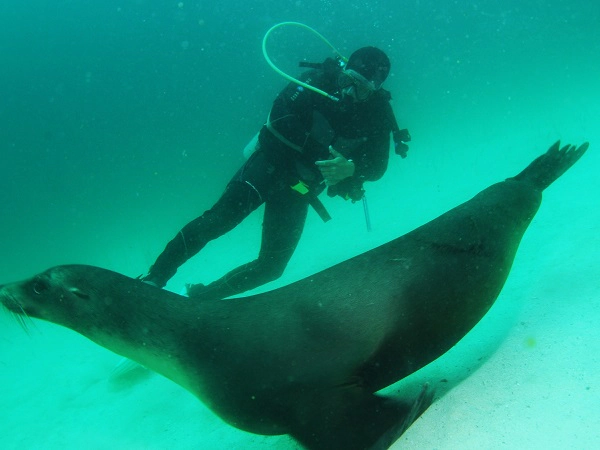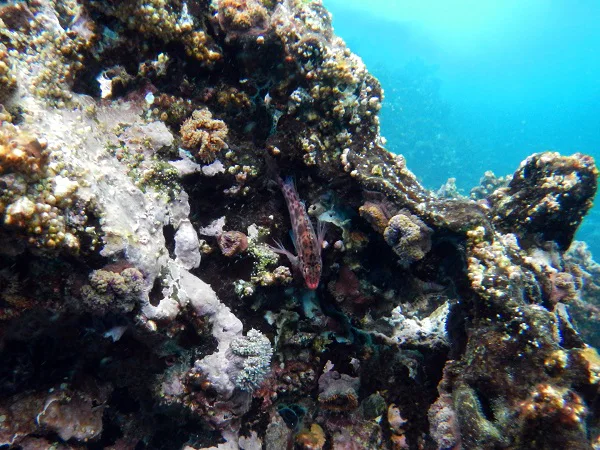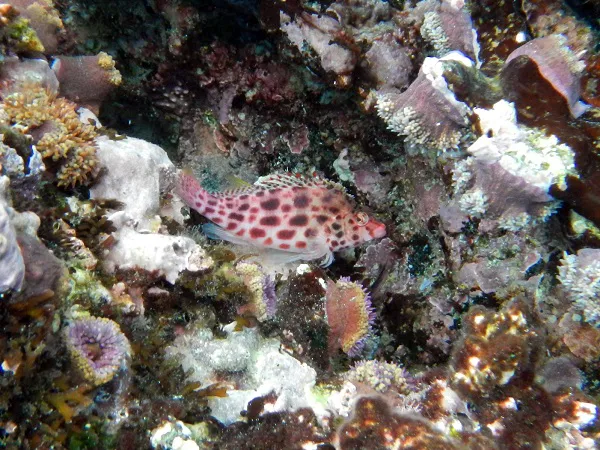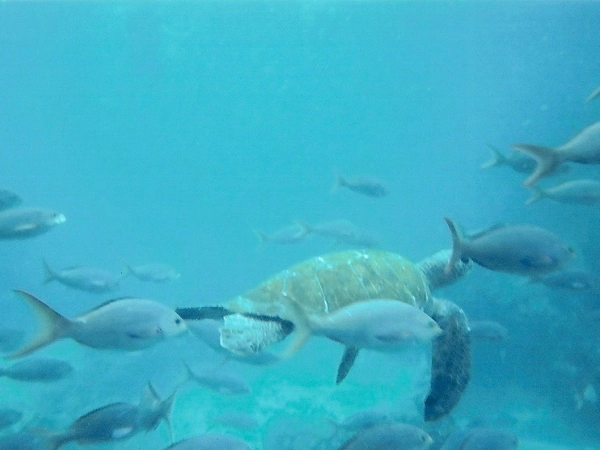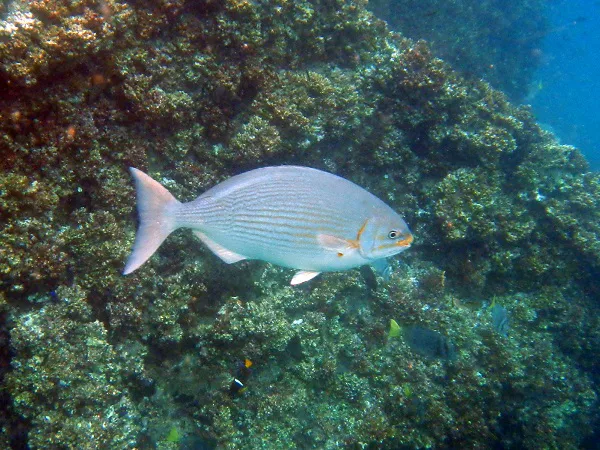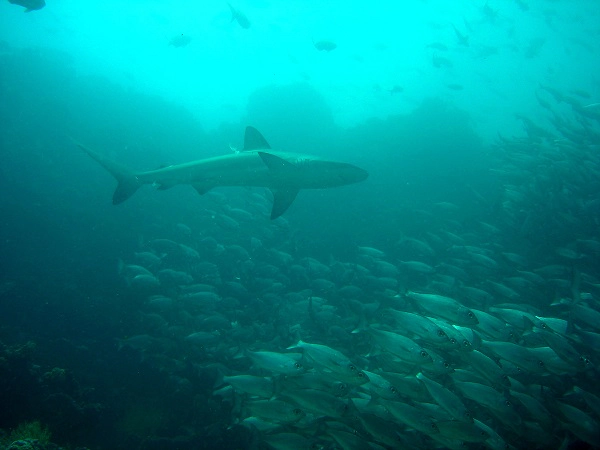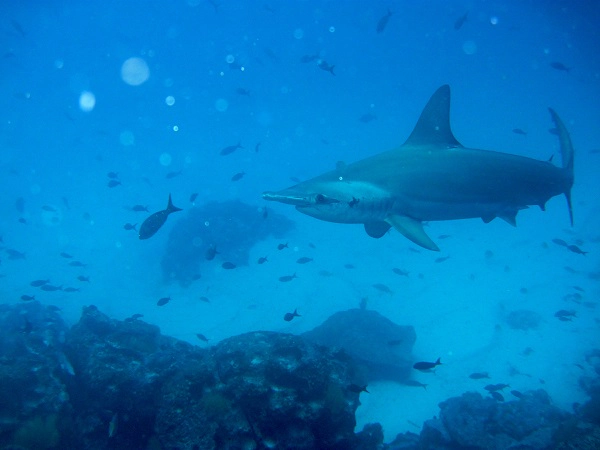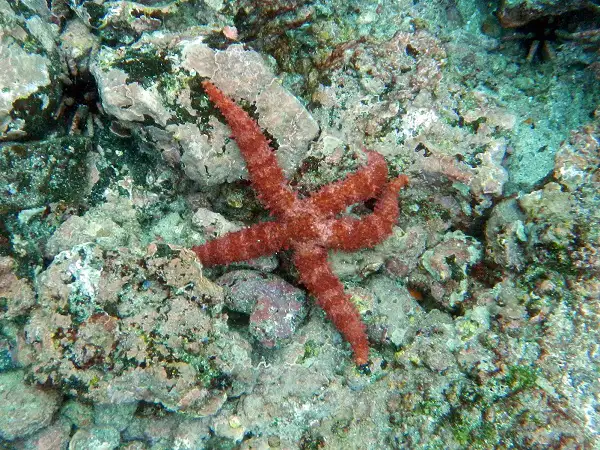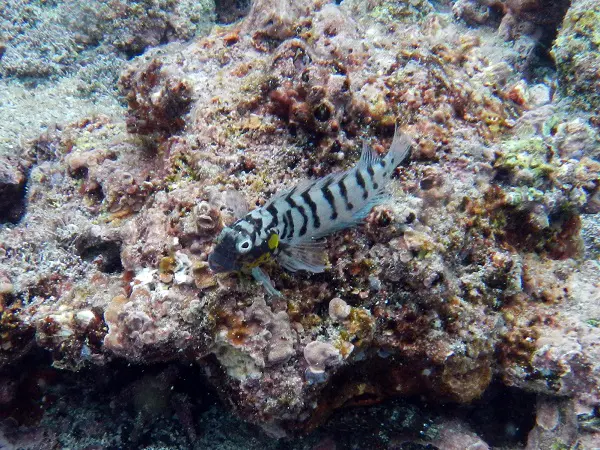World-Class Diving: Discover the Underwater Marvels of Galapagos
General Information
Galapagos is considered one of the most popular diving destinations worldwide because the underwater world of the islands is as astonishing and impressive as the flora and fauna on the islands themselves. Divers who want to explore the dive sites of the Galapagos Islands should have some experience, as the currents and sometimes limited visibility should not be underestimated. Those with the appropriate experience will love the surroundings of the diving islands and sites of Galapagos! These include for example Mosquera and Seymour, Gordon Rocks, Cousin’s Rock, as well as the islets of Champion and Enderby near Floreana.
Next, we want to introduce 4 islands that are considered the main diving spots of Galapagos and that you can explore as part of a diving cruise. In addition to diving cruises, there is also the option to take day trips to the dive spots while spending the nights in a hotel on an island. One ship for such day excursions is, for example, the motor sailer Nautilus.
The most important diving islands
Pinzon
Pinzon is located in the middle of the triangle formed by Isabela, Santiago, and Santa Cruz. There is no landing site on land or water. The island itself is covered with epiphytes and cacti, and it is home to Darwin’s finches, Galapagos doves, Galapagos snakes, and giant tortoises. The number of the latter has decreased significantly in the last hundred years due to black rats and whalers, which is why there is now a breeding program.
The island is surrounded by deep waters, making it attractive for divers. It is also suitable for beginners who can explore the calm bay south of the island. For experienced divers, a steep wall offers an exciting challenge. During dives, visitors will encounter many colorful tropical fish, sea lions, various species of sharks and rays, lobsters, yellowtail surgeonfish, California angelfish, triggerfish, barracudas, and perhaps seahorses and sea turtles.
Pinzon Island is visited by the dive yacht Galapagos Sky, among others.
Darwin
The island was named after Charles Darwin and is the northernmost of the Galapagos Islands. Its unique underwater world is one of the reasons why Galapagos is considered one of the 7 Underwater Wonders of the World. Darwin, along with Wolf Island, lies on the volcanic Wolf-Darwin Ridge, which rises about 1000 meters from the ocean floor, with the islands forming its peaks. It is inhabited only by seabirds, including the swallow-tailed gull, which breeds exclusively on Darwin Island. There are no landing sites on the island, but the surrounding rocks are popular among divers. A special attraction is the Darwin’s Arch, located southeast of the island. Along its wall, drift diving is possible. During dives around Darwin, visitors can observe hammerhead sharks, blacktip, silky, and Galapagos sharks, as well as schools of barracudas, turtles, angel sharks, and moray eels. Occasionally, sightings of tiger sharks, manta rays, and bottlenose dolphins occur. Whale sharks can be observed between May and November.
You can visit Darwin Island with the yacht Aqua and the dive yachts Galapagos Sky, Aggressor, Calipso, and Humboldt Explorer.
Wolf
Wolf Island, named after the German geologist Theodor Wolf, is the second tip of the aforementioned Wolf-Darwin Ridge. It is located around 160 km from Isabela. No land visit is possible here either. A special feature of Wolf is the presence of the vampire finch, which drinks the blood of other birds on the island. This behavior is probably an adaptation to the scarcity of food during the long dry seasons on the island.
Marine life is also particularly diverse here, especially due to the comparatively cold currents. Due to the sometimes strong currents, sharp-edged rocks and sometimes limited visibility, Wolf is only suitable for experienced divers. You will encounter great spotted whale sharks, dolphins, large schools of tuna, spotted eagle rays, barracudas, sea lions and sea turtles, various species of whale as well as hammerhead, white tip and Galápagos sharks. During a night dive, you can also observe red-lipped batfish migrating along the seabed. Particularly popular diving spots at Wolf are El Derrumbe, Shark Bay, La Banana and Ventana Islet.
The yachts Calipso and Aqua as well as the diving yachts Galapagos Sky, Aggressor and Humboldt Explorer steer.
Marchena
Marchena is one of the larger northern islands of the Galapagos archipelago and is one of the most untouched. No land visits are possible here. The rocky caves and bays on the south-western coast are a popular spot for fur seals.
Two maritime visitor spots on the island are important: Punta Espejo and Punta Mejía. At Punta Espejo on the south-eastern edge of the island, hammerhead sharks, Galapagos sharks, dolphins, sea lions, rays, sea turtles, moray eels and garden eels can be spotted.
At Punta Mejía on the western side, you can observe rays, eels and many tropical fish.
